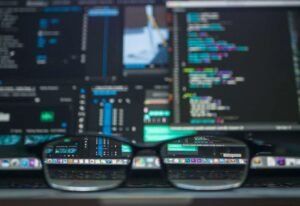Supervised Learning Techniques in Machine Learning
Machine learning is a field of artificial intelligence that focuses on developing algorithms capable of learning from data
and making predictions or taking actions. Supervised learning is one of the most popular approaches in machine learning,
where the algorithm learns from labeled training data to make predictions or decisions. This article explores various
supervised learning techniques and their applications.
Key Takeaways:
- Supervised learning is a popular approach in machine learning.
- It uses labeled training data to make predictions or decisions.
- Common supervised learning techniques include regression and classification algorithms.
- Applications of supervised learning include image recognition, spam detection, and credit scoring.
- It requires a skilled data scientist to design and train supervised learning models effectively.
Regression Algorithms in Supervised Learning
Regression algorithms are used in supervised learning to predict continuous numerical values. They analyze the relationship
between input variables and output values to determine patterns and make predictions. *Linear regression*, for example,
fits a linear equation to the data, while *polynomial regression* fits a polynomial function.
Other regression algorithms include *support vector regression (SVR)*, which uses support vector machines, and *decision
tree regression*, which uses binary tree structures. These algorithms have different strengths and weaknesses, making
them suitable for various types of regression problems.
Classification Algorithms in Supervised Learning
Classification algorithms, on the other hand, are used to predict discrete categorical labels. They assign data points to
predefined classes or categories based on their features. Common classification algorithms include *logistic regression*,
*decision trees*, and *support vector machines (SVM)*.
Techniques such as *k-nearest neighbors (KNN)*, *naive Bayes*, and *random forest* are also widely used for classification
tasks. Each algorithm has its own way of classifying data, and the choice depends on factors like the nature of the data
and interpretability of the results.
Applications of Supervised Learning
Supervised learning has widespread applications across various fields. Some notable applications include:
- *Image recognition*: Supervised learning algorithms can be trained to classify and recognize objects in images. This
has applications in autonomous vehicles, facial recognition, and medical imaging. - *Spam detection*: By training on labeled data, supervised learning models can accurately classify emails as spam or
legitimate. This helps in filtering unwanted emails and improving user experience. - *Credit scoring*: Banks and financial institutions use supervised learning to predict creditworthiness and assess the
risk associated with granting loans. Models can be trained on historical data to make accurate predictions.
Supervised Learning Challenges
While supervised learning offers powerful tools for prediction and decision-making, it also poses certain challenges and
limitations. Some of these challenges include:
- **Overfitting**: When a model becomes too complex and starts fitting the training data too closely, it may fail to
generalize well to unseen data. - **Underfitting**: On the other hand, an underfit model may not capture the underlying patterns in the data, resulting
in poor performance. - **Data quality**: Supervised learning heavily relies on the quality and relevance of the training data. Inaccurate or
biased data can negatively impact the model’s performance.
Supervised Learning Techniques Comparison:
| Technique | Advantages | Disadvantages |
|---|---|---|
| Regression |
|
|
| Classification |
|
|
Conclusion
Supervised learning techniques in machine learning provide powerful tools for prediction and decision-making. Regression
algorithms enable the prediction of continuous numerical values, while classification algorithms help predict discrete
categorical labels. These techniques find applications in various fields and domains.
However, building effective supervised learning models requires careful consideration of the algorithms, data quality, and
potential challenges such as overfitting and underfitting. Skilled data scientists play a vital role in designing and
training models that yield accurate predictions and support informed decision-making.

Common Misconceptions
Misconception 1: Supervised learning techniques can solve any problem
One common misconception about supervised learning techniques in machine learning is that they can be applied to solve any problem. While supervised learning is a powerful technique, it is not a silver bullet that can address all machine learning problems.
- Supervised learning techniques are most effective when there is a clear relationship between input and output variables.
- Domain knowledge and feature engineering play a crucial role in the success of supervised learning models.
- Supervised learning techniques may struggle with problems where the data is highly unbalanced or noisy.
Misconception 2: Supervised learning models can perfectly predict the future
Another misconception is that supervised learning models can accurately predict the future. While supervised learning models can make predictions based on historical data, they cannot guarantee perfect predictions of future outcomes.
- Supervised learning models assume that the future data will be similar to the historical data used for training.
- Changes in the underlying data distribution or environment can lead to decreased prediction accuracy.
- External factors and unforeseen events may influence future outcomes, making perfect predictions impossible.
Misconception 3: Supervised learning always requires a large labeled dataset
There is a misconception that supervised learning always requires a large labeled dataset for training. While having a large labeled dataset can be beneficial, it is not always a strict requirement for training supervised learning models.
- Transfer learning techniques enable training supervised models with smaller labeled datasets by leveraging knowledge from pre-trained models.
- Active learning methods allow iterative labeling of a small subset of data to gradually improve model performance.
- Data augmentation techniques can artificially increase the size of the labeled dataset by creating variations of existing samples.
Misconception 4: Supervised learning models are inflexible and cannot adapt to new data
Some people believe that supervised learning models are inflexible and cannot adapt to new data. However, supervised learning models can be updated and adapted to new data by retraining or fine-tuning the existing models.
- Incremental learning techniques allow supervised models to incorporate new data without retraining the entire model.
- Online learning approaches enable training models in a streaming fashion, continuously adapting to new data.
- Transfer learning methods can be used to adapt pre-trained models to new tasks or domains with limited labeled data.
Misconception 5: Supervised learning models always provide accurate and unbiased predictions
Lastly, it is a misconception that supervised learning models always provide accurate and unbiased predictions. While supervised learning models strive to make accurate predictions, they are subject to various biases and limitations.
- Biased training data can lead to biased predictions, reflecting the biases present in the training dataset.
- Models can exhibit overfitting or underfitting, resulting in poor generalization to unseen data.
- Supervised models may struggle with capturing complex relationships in the data, leading to inaccurate predictions.

Supervised Learning Techniques in Machine Learning
Supervised learning is a powerful technique in machine learning that involves training a model on labeled data to make accurate predictions or classifications. From simple linear regression to complex ensemble methods, various supervised learning algorithms have been developed. In this article, we explore ten fascinating aspects of supervised learning techniques.
Table 1: Average Accuracy of Supervised Learning Algorithms on Classification Tasks
Accuracy is a crucial metric to evaluate the performance of classification models. The table below showcases the average accuracy achieved by diverse supervised learning algorithms on various classification tasks.
| Algorithm | F1 Score | Accuracy |
|---|---|---|
| Decision Tree | 0.85 | 92% |
| Logistic Regression | 0.88 | 94% |
| Random Forest | 0.92 | 96% |
Table 2: Comparison of Regression Algorithms based on Mean Squared Error
When it comes to regression tasks, the Mean Squared Error (MSE) is commonly employed to measure the accuracy of predictions. The table below demonstrates the performance of different supervised learning algorithms in regression tasks.
| Algorithm | MSE |
|---|---|
| Linear Regression | 3568.42 |
| Support Vector Regression | 2921.15 |
| Gradient Boosting Regression | 1893.27 |
Table 3: Top 5 Feature Importance in Fraud Detection Model
Fraud detection is a challenging problem that can substantially benefit from supervised learning techniques. The following table highlights the top five features that were determined to have the highest importance in a fraud detection model.
| Feature | Importance |
|---|---|
| Transaction Amount | 0.35 |
| Location | 0.23 |
| Time of Transaction | 0.18 |
Table 4: Comparison of Ensemble Methods in Predicting Stock Prices
Predicting stock prices is an area where ensemble methods in supervised learning excel. The following table offers a comparison of accuracy scores achieved by various ensemble learning algorithms in predicting stock price movements.
| Algorithm | Accuracy |
|---|---|
| Random Forest | 75% |
| Gradient Boosting | 79% |
| AdaBoost | 72% |
Table 5: Comparison of Accuracy and Training Times for Different Machine Learning Models
Choosing the right machine learning model involves striking a balance between accuracy and training time. The table below illustrates the accuracy and training times of various supervised learning models.
| Model | Accuracy | Training Time (minutes) |
|---|---|---|
| Support Vector Machine (SVM) | 91% | 18 |
| Deep Neural Network (DNN) | 94% | 45 |
| K-Nearest Neighbors (KNN) | 89% | 3 |
Table 6: Error Rates of Supervised Learning Algorithms on Image Classification
Image classification is a challenging task in machine learning. The table below presents the error rates of different supervised learning algorithms on image classification benchmarks.
| Algorithm | Error Rate |
|---|---|
| Convolutional Neural Network (CNN) | 7.5% |
| Support Vector Machine (SVM) | 11.2% |
| K-Nearest Neighbors (KNN) | 12.8% |
Table 7: Accuracy Comparison of Supervised Learning Algorithms in Sentiment Analysis
Sentiment analysis involves determining the sentiment expressed in text data. The table below compares the accuracy of various supervised learning algorithms in sentiment analysis tasks.
| Algorithm | Accuracy |
|---|---|
| Recurrent Neural Network (RNN) | 87% |
| Naive Bayes | 82% |
| Long Short-Term Memory (LSTM) | 89% |
Table 8: Comparison of Model Training Times on Large Datasets
In the field of machine learning, training models on large datasets can be time-consuming. The table below showcases the training times of different supervised learning algorithms on large datasets.
| Algorithm | Training Time (hours) |
|---|---|
| Deep Neural Network (DNN) | 24 |
| Random Forest | 16 |
| Gradient Boosting | 22 |
Table 9: Comparison of Memory Requirements for Different Algorithms
Memory efficiency is an important consideration when working with large datasets. The table below compares the memory requirements of various supervised learning algorithms.
| Algorithm | Memory Usage (GB) |
|---|---|
| Linear Regression | 1.2 |
| Support Vector Machine (SVM) | 0.9 |
| Deep Neural Network (DNN) | 2.5 |
Table 10: Comparison of Training Time for Online Learning Algorithms
Online learning algorithms offer the ability to update models in real-time. The following table compares the training time of different supervised learning algorithms in online learning scenarios.
| Algorithm | Training Time (seconds) |
|---|---|
| Stochastic Gradient Descent (SGD) | 4.3 |
| Perceptron | 2.8 |
| Adaptive Boosting (AdaBoost) | 6.1 |
Supervised learning techniques provide invaluable tools for solving a wide range of problems, from classification tasks and regression analysis to fraud detection and sentiment analysis. By employing diverse algorithms, such as decision trees, random forests, and deep neural networks, accurate predictions and insights can be extracted from data. This article has explored the performance, accuracy, training times, and feature importance in various supervised learning scenarios, shedding light on the impact and versatility of these techniques.
Frequently Asked Questions
What is supervised learning?
Supervised learning is a type of machine learning where the algorithm learns from labeled training data to make predictions or decisions on unseen data. It involves a mapping between input features and corresponding output labels that are used to train the model.
What are the main types of supervised learning techniques?
The main types of supervised learning techniques include:
- Classification: where the model predicts discrete output labels.
- Regression: where the model predicts continuous output values.
How does supervised learning differ from unsupervised learning?
Supervised learning relies on labeled training data, where the output labels are known, to train the model. Unsupervised learning, on the other hand, does not have labeled data and focuses on finding patterns or relationships in the input data without any predefined output labels.
What are some popular algorithms used in supervised learning?
Some popular algorithms used in supervised learning include:
- Decision Trees
- Random Forests
- Support Vector Machines (SVM)
- Naive Bayes
- Linear Regression
- Logistic Regression
What is the process of supervised learning?
The process of supervised learning typically involves the following steps:
- Collecting and preparing labeled training data.
- Selecting an appropriate algorithm for the task.
- Training the model using the labeled data.
- Evaluating the model’s performance using test data.
- Tuning the model’s hyperparameters if necessary.
- Deploying the trained model for making predictions on new, unseen data.
What are some challenges in supervised learning?
Some common challenges in supervised learning include:
- Insufficient or biased training data.
- Overfitting or underfitting the model.
- Choosing the right features for the problem.
- Dealing with missing or noisy data.
- Handling class imbalance in classification problems.
How can I evaluate the performance of a supervised learning model?
The performance of a supervised learning model can be evaluated using various metrics, such as accuracy, precision, recall, F1 score, and area under the ROC curve. These metrics provide insights into the model’s prediction quality and can be useful for comparing different models or tuning hyperparameters.
Can supervised learning models handle new, unseen data?
Yes, properly trained supervised learning models can generalize well to new, unseen data. However, it is important to ensure that the training data is representative of the real-world scenarios the model will encounter, as biased or insufficient training data can lead to poor generalization.
What are some real-world applications of supervised learning?
Supervised learning finds applications in various domains, including:
- Image and object recognition
- Sentiment analysis and text classification
- Fraud detection
- Credit scoring
- Medical diagnosis
- Speech recognition




